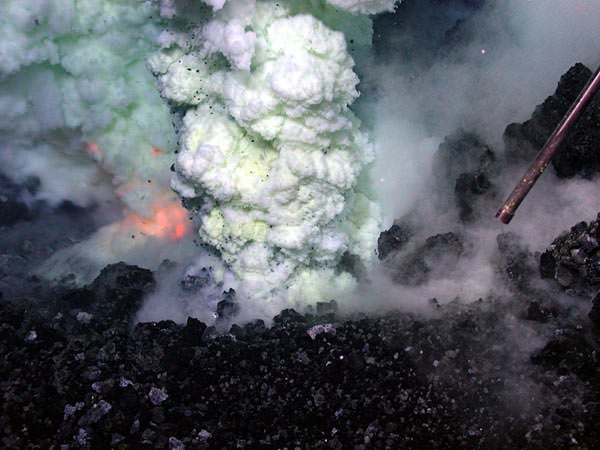Ever seen fire and smoke under water before? Oceanographers using a remotely operated underwater vehicle discovered and recorded the first video and still images of the deepest underwater volcano actively erupting molten lava on the seafloor. The ROV Jason vehicle captured the powerful event nearly 1.2 km (4,000 feet) below the surface of the Pacific Ocean, in the "Ring of Fire" region, near Fiji, Tonga and Samoa. "It was very exciting. We've never seen anything like that on the ocean floor," said Bob Embley, a marine geologist with NOAA, who described the event an underwater Fourth of July. "When we started to see red flashes of light, everyone was extremely excited. Then we had to get down to the work of actually understanding of what we were seeing."
The scientists presented their findings, along with HD video at the American Geophysical Union's fall meetings in San Fransciso. The video was taken in May of 2009, and the science team said the undersea volcano is likely to still be erupting, and may have started activity in late 2008.
[/caption]
Embly said the eruption couldn't be seen above the water, but there were "water column anomlies which indicated an eruption going on. We knew within a few hundred feet where the eruption was taking place."
There were actually two erupting regions, but the video shows the most dramatic one. Visible in the video is magma – sometimes fiery, red hot at 1,371 C (2,500 degrees F) – bursting up through the seawater, with fragments of rock being propelled and magma flowing down the slope of the volcano. Hot sulfer "smoke" plumes can also be seen.
The volcano is spewing a type of lava known as Boninite, which until now had only been seen in extinct volcanoes more than a million years old.
A underwater "hydrophone" recorded the sound, and it was synched with the video.
The ROV Jason is designed and operated by the
Woods Hole Oceanographic Institution for the National Deep Submergence Facility.
Samples collected near the volcano showed the seawater to be highly acidic, similar to battery or stomach acid, the researchers said. Despite the harsh conditions, scientists found and photographed a species of shrimp apparently thriving near the volcanic vents.
"Nobody would have predicted that things would have survived long enough in water that acidic. It seems like it's too harsh a condition," said University of Washington chemical oceanographer Joseph Resing.
They hope to go back in a few months and see all the other creatures that have taken up residence there.
Sources:
WHOI
,
NOAA,
NSF
, AGU press conference
 Universe Today
Universe Today
